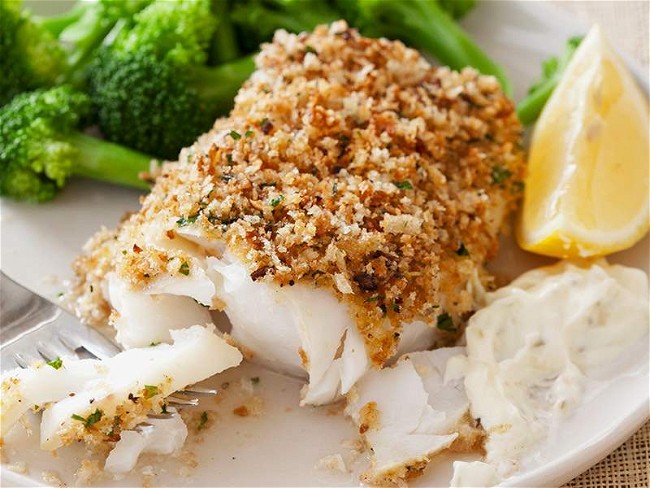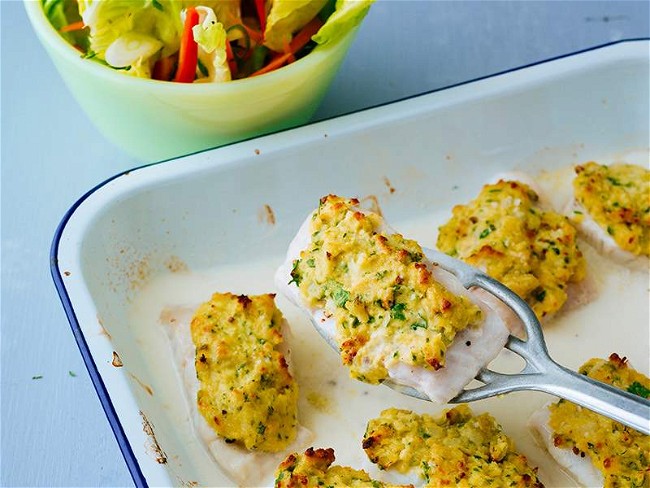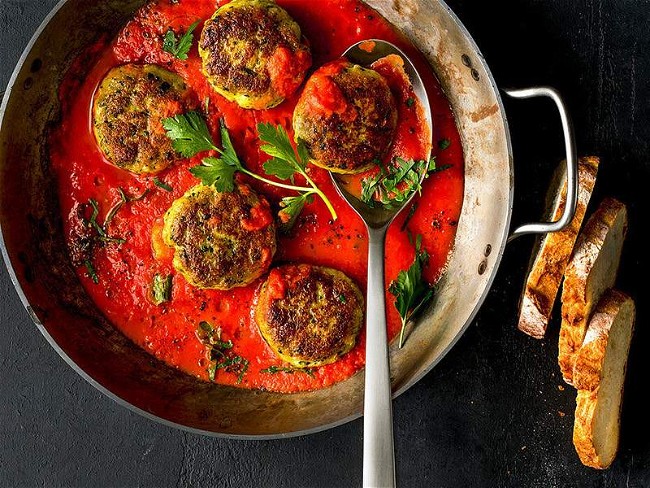Your Essential Guide to Cod

Cod is one of the most ubiquitous types of fish in the culinary world, found on menus and dinner tables across continents. Both Atlantic and Pacific cod have provided vital nutrition for coastal communities and spurred trade expansion in the last 600 years. Basque fishermen were catching Atlantic cod as early as the 15th century, pioneering techniques to salt and dry the fish for long-distance transportation and storage. This salted cod product, bacalao (Spanish) or bacalhau (Portuguese), fueled exploration and commerce. Beyond the flesh, cod roe and milt are also considered delicacies in Scandinavian and Japanese cuisines.
- Introduction to Cod
- What is Cod?
- What Does Cod Taste Like?
- Most Popular True Cod Species
- Other Popular Cod Family Species
- What Are False Cod Species?
- What is Scrod?
- What is Skrei Cod?
- Is Cod Sustainable?
- Is Cod Healthy?
- Our Favorite Cod Recipes
Introduction to Cod
Cod has played a significant role in America’s development since the 16th century. Cod fishing was booming off the Grand Banks of Newfoundland and Georges Bank of New England, supporting colonial trade with Europe and growing fishing towns like Gloucester, Massachusetts. Cod fishermen were also some of the first colonists to rebel against British rule, providing ships and supplies to the Continental Army in the Revolutionary War. After the war, the cod fishing industry continued to grow, and cod remained an essential part of the American economy throughout the following centuries.
At Fulton Fish Market, we have overseen the cod trade for over 200 years, supplying both local New Yorkers and overseas buyers. In fact, cod once accounted for about 25% of our seafood sales. More species have since come through our doors, as have questions about distinguishing between species, evaluation of sustainability, and ideal cooking methods for cod. This guide will provide a deep dive into cod, revealing how to identify varieties, sustainable harvesting techniques, health benefits, and delicious preparations to make the most of this timeless fish.
What is Cod?
Cod typically refers to true cod species, omnivorous fish found in the temperate and Arctic waters of the Northern Hemisphere. True cod are distinguished by their elongated bodies that feature three dorsal (back) fins and a barbel on their chins. Atlantic cod and Pacific cod are the most popular species of true cod eaten around the world and enjoyed cooked, raw, smoked, or salt-cured.
True cod are members of the cod family, formally named Gadidae, which also includes several species of pollock, hake, and haddock. Species of each cod family member are caught in the northern United States, among other regions worldwide. Let’s dive into the most commonly eaten cod family species.
What Does Cod Taste Like?
Cod have a mild and generally neutral flavor with hints of savoriness, also known as umami. This flavor profile is developed by cod species’ diets of small crustaceans and, in the case of larger cod, small finfish as well. Cod’s white flesh is prized for its flaky texture that adapts well to endless preparations from fish sticks to haute cuisine.
Most Popular True Cod Species
Atlantic Cod
Atlantic cod (also known as codling) is the most globally abundant and commonly consumed true cod species. These large fish can reach up to 5 feet long and can weigh over 100 pounds. Atlantic cod can be identified by their greenish back with yellow spots and white belly. They inhabit the Atlantic waters of the northern United States, Canada, Greenland, Iceland, and Norway. Atlantic cod has snowy white flesh with a delicate, flaky texture. Atlantic cod’s flavor is mild and savory, making it a prime choice for fish sticks, fish and chips, blackened cod, and other fried preparations.
Pacific Cod
Pacific cod (also called gray cod and grayfish) are smaller than their Atlantic cousins, averaging 2-3 feet in length and around 15 pounds. These true cod have a gray coloration with extensive dark brown spots across their bodies. Pacific cod live in the northern Pacific Ocean, particularly the Bering Sea and Gulf of Alaska. Their meat has a slightly firmer texture and sweeter flavor than Atlantic cod. These Pacific cod are a staple of Alaskan cuisine, specifically in fish tacos, baked Pacific cod, blackened cod, and smoked fish dip.
Other Popular Cod Family (Gadidae) Species
Alaskan Pollock
Alaskan pollock (known as snow cod, bigeye cod, and walleye pollock) is the United States’ largest fishery by volume, abundantly found in Alaska’s Bering Sea. Alaskan pollock boasts gray skin with a dark line running down their backs. They average 2-3 feet long and weigh up to 11 pounds. Alaskan pollock’s meat is a balance between Atlantic cod’s snow-white flesh and Pacific cod’s firmer texture. The neutral flavor and abundance of Alaskan pollock make it ideal for minced seafood products like imitation crab and fried applications like fish and chips.
Atlantic Pollock
Atlantic pollock (known as coalfish, Boston bluefish, and European pollock) is a member of the cod family and is found in the North Atlantic Ocean between Virginia and Maine in the US. Often smaller than Alaskan pollock, Atlantic pollock averages 1-2 feet long and weighs up to 5 pounds. Atlantic pollock have silvery-gray skin with a dark line running down their backs. Their meat is white and flaky with a mild flavor, often used in fish and chips, fish cakes, and other processed seafood products.
Haddock
Haddock is another member of the cod family found in the northern Atlantic Ocean. Among the smaller cod members, haddock grow to around 2-3 feet in length and weigh 5-10 pounds. They can be identified by their dark gray coloration and distinct black blotch on each side above their pectoral fins. Haddock meat is drier and flakier with a slightly sweeter and more delicate flavor than other cod species. Popular haddock dishes include smoked haddock chowder and breaded haddock fillets. Haddock is an extremely popular fish to fry in the northeastern United States.
Whiting
Whiting is a species of hake and the smallest member in the cod family, reaching 1-2 feet in length and about 1-3 pounds. Whiting live in the eastern Atlantic Ocean and the Mediterranean Sea. They have silver-colored skin with yellow fins. Whiting fillets yield sweet, delicate meat similar to other hake and haddock but with even smaller flaking because of their size. Whiting is suitable for frying, baking, broiling, and poaching. Traditional whiting preparations include French colin meunière, Spanish fried whiting, and Italian bianchetti fritti.
What Are False Cod Species?
Not every fish labeled as “cod” belongs to the Gadidae family. Lookalikes such as lingcod and black cod often get mistaken for true cod due to their names, as well as similarities in appearance and taste.
Lingcod
Lingcod (sometimes called rock cod or buffalo cod) are members of the Greenling family rather than cod. Lingcod are notorious predators, eating anything from small invertebrates to grown salmon. These green and brown-speckled fish live along the Pacific coast from Alaska to Baja, California. Lingcod can reach up to 5 feet long and weigh over 50 pounds. Their soft, flaky meat is typically sweeter than true cod and is quite versatile in the kitchen. A blue pigment called biliverdin turns about 20% of lingcod skin and flesh a bright blue color. There is no conclusive research for why this pigment transforms select lingcod; however, the unique blue coloring has no impact on the edibility and flavor profile of these fish.
Black Cod
Black cod (also called sablefish or butterfish) belongs to a different fish family, Anoplopomatidae. These fish live in deep Pacific waters from Alaska to Japan and are prized for their buttery taste and velvety texture brought by their high-fat content. Black cod can be distinguished by their dark brown to black coloring with lighter undersides and a slender, cylindrical body shape, reaching about 3 feet long and 15 pounds. Their ivory-colored meat was made popular by chef Nobu Matsuhisa’s famous miso black cod recipe and can now be found in entrees at upscale seafood restaurants around the world.
What is Scrod?
Scrod is not a specific species of fish but rather a size category. Scrod is a term used to describe a small member of the cod family, usually weighing up to 4 pounds. Typically sold whole or by the fillet, scrod is a popular seafood choice because of its mild flavor and versatility in the kitchen.
What is Skrei Cod?
Skrei cod is an Atlantic cod that inhabits the frigid Barents Sea off the coast of Norway. These rare, large cod average 3-4 feet long and can weigh over 30 pounds. Every year before spawning, skrei cod embark on a remarkable migration that develops their prized taste and texture into one of Norway’s aquatic delicacies. The long journey transforms their flesh leaner yet more intense in flavor than other cod species. Skrei cod’s prized flaky fillets are central to Norwegian cuisine, where it is enjoyed poached, salted, dried, or stewed to highlight its velvety cooked texture and savory taste. Its texture also holds up well to other cooking methods like grilling, baking, and pan frying. Skrei cod are usually available exclusively in their winter spawning months from January until April.
Is Cod Sustainable?
Cod species populations are sustainably managed under strict catch limits to prevent overfishing, as regulated by government fishing agencies. Responsible fishing practices like longline and handline fishing selectively catch adult cod while avoiding bycatch and habitat damage. As a trusted seafood supplier for over 200 years, we at Fulton Fish Market are proud to exclusively source sustainable cod from the world’s best-managed fisheries and producers. Learn more about our sustainable sourcing here.
Is Cod Healthy?
Each species of cod delivers excellent health benefits as lean, low-calorie proteins. Cod is high in protein that supports muscle growth and repair and is rich in phosphorus, niacin, and vitamin B12. All species provide heart-healthy omega-3 fatty acids, with Pacific cod and Atlantic cod containing the most per serving. Eating cod is linked to cardiovascular benefits like decreased blood pressure and triglycerides. Regular cod consumption may also reduce inflammation. Across all varieties, cod is an excellent addition to a healthy diet.
Our Favorite Cod Recipes
This oven-baked cod recipe is a twist on a British classic, still crispy and delicious but without the deep frying. This easy cod recipe is a great way to introduce fish into your weekly menu and keep even the pickiest eaters happy.
Mild, flaky cod crowned with a golden, crunchy, cheesy breadcrumb topping. What’s not to love? The whole family will enjoy this easy cod recipe.
Cod Cakes in Tomato Sauce Recipe
Comfort food doesn’t get much better than this. Our cod cakes recipe is full of mild, sweet cod, unlike others that are packed with filler so that you can enjoy the true flavor of our cod.



